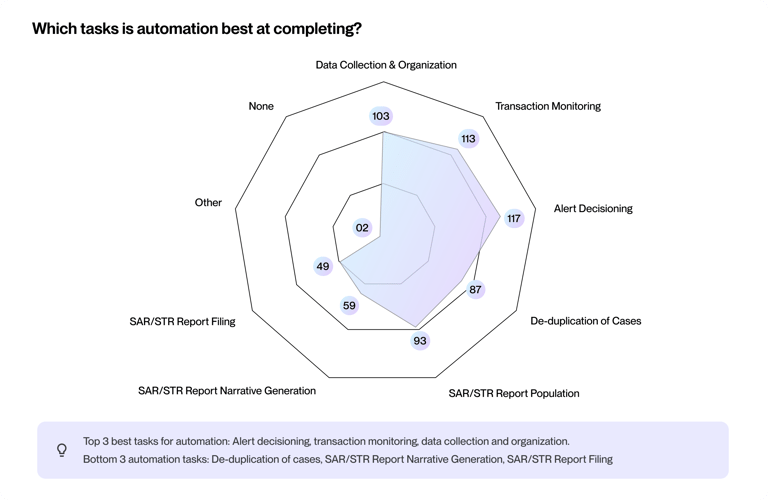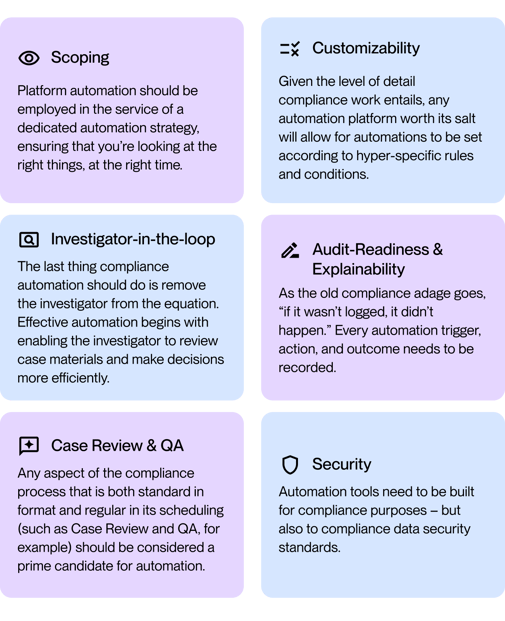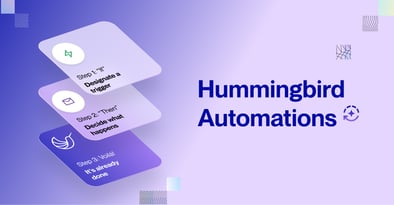How to Build a Compliance Automation Program

Hummingbird
Strategies and tips for getting your automation program up and running.
Introduction: What is automation good for?
It’s a common mistake to think of automation as a “do everything” machine – working on every conceivable task with not a human in sight. In reality, however, most automated systems are focused on handling time-consuming, run-of-the-mill tasks so that humans can focus on their most high-value work. Data on the subject tells a similar story. We recently conducted an independent survey of 225 compliance professionals. When asked what tasks they thought were best completed by automation, they had this to say:

The takeaway? High-volume, early-stage parts of an investigation are the practice areas where automation can be the most transformative.
Building Your Automation Strategy
Step 1: Establish Your Areas of Opportunity
Conducting an overview of your compliance operations and making a list of practice areas with a high volume of manual task work is the first step in determining where automation will make an impact.
Step 2: Research Your Work Processes
Break down these practice areas into their constituent steps and processes. The goal here is to identify pinch-points that could easily be handled by automation. Keep an eye out for any tasks that involve copy/pasting, manual importing/exporting, clicking/ dragging, cleaning and formatting, etc.
Step 3: Identify Roadblocks or Barriers
Take your knowledge of what (and where) you’d like to automate, look for anything that might stand in the way of turning these manual processes into automated ones. In particular, keep an eye out for implementation challenges, data privacy concerns, or specific regulatory questions.
Step 4: Understand What Your Team Needs from Its Toolset
As a final step, review your opportunities, processes, and roadblocks. Use that collected data to build a list of goals. As you do so, we recommend formulating your goals in terms of a future state you’d like to inhabit, rather than a one time accomplishment you’d like to attain. This will help you build an automations platform that leaves room for further growth and development.
A Helpful Cheat Sheet
Here at Hummingbird, we’ve spent a lot of time thinking about what attributes strong compliance automation programs should have. We’ve essentialized that thinking into six foundational pillars, which you can find below.

Wrap-Up
Automations can be a huge source of time-savings, and an important efficiency driver. But automation applied to a compliance program in an ad-hoc manner can yield mixed results, and make it hard to assess both impact and value. Developing a proactive automation strategy is key to rolling out program changes that will deliver maximum results.
Stay Connected
Subscribe to receive new content from Hummingbird


